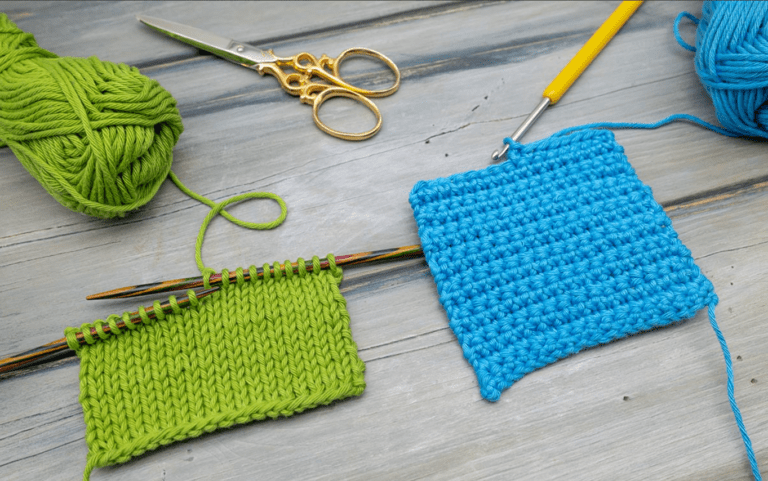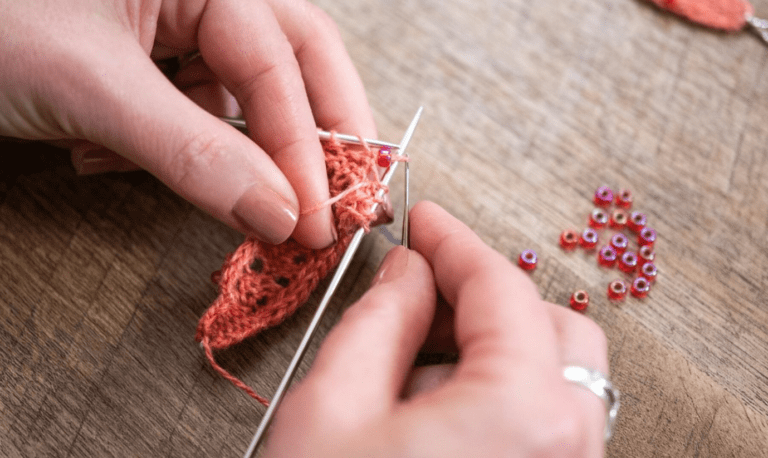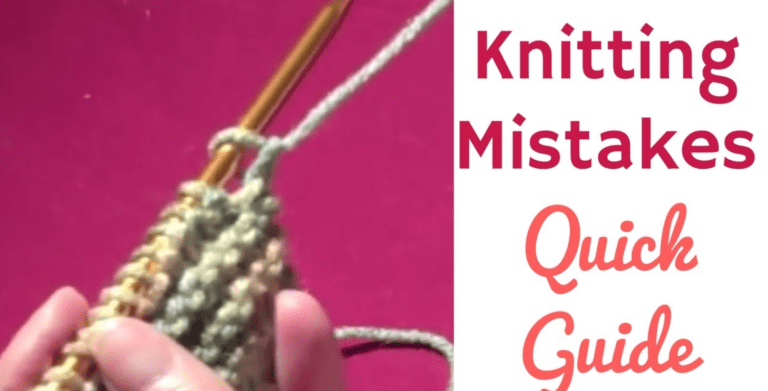Yarn for Knitting Socks
Knitting socks is a popular knitting project choice. Sock knitting becomes addictive! Knitting socks is one of the most popular knitting projects out there. To make the perfect pair, you’ll want to pick a skein of yarn spun specifically for the job. Hosiery works best with a yarn that provides some stretch, and knitters generally prefer a wool-nylon blend with at least 20 percent nylon for guaranteed flexibility. If you prefer thin socks, choose a weighted skein with toes, and if you prefer a thicker sock, choose a larger ball. Also, you should choose a yarn that suits your taste. Available in a multitude of material compositions, colors, and gradients, there are plenty of sock yarns to choose from. Browse our roundup below of the best options on the market.
Here is my guide to sock yarn. There are many types of yarn, but some yarns are better than others for making suit socks.
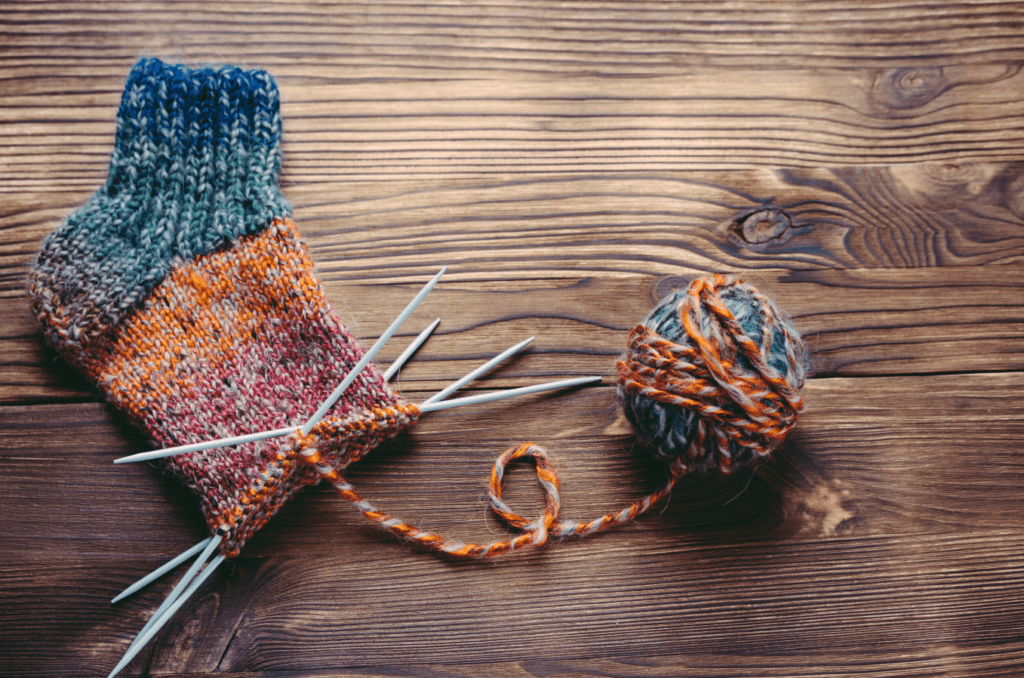
What is the best yarn for knitting socks?
Here is the perfect yarn for making socks.
- My top pick – the best sock yarn
- The ultimate luxury option – the finest worsted-weight sock yarn
- The best budget choice – the best self-stripping yarn for socks
Lots of beautiful stocking patterns, stocking stitches, and dyed yarn for knitting socks.
Explore colors, and different sewing techniques, and have lots of fun!
Yarn Knitters recommend
Most major brand yarn companies offer it. Knitters advise.
- Feels like a yarn of paradise.
- Knit Picks Stroll Hand Painted
- Regia 4-ply
- Shoupel Zuber ball
Rena is an expert yarn reviewer at Knit Better Socks. Rena has shared her sock knitting experiences over the years.
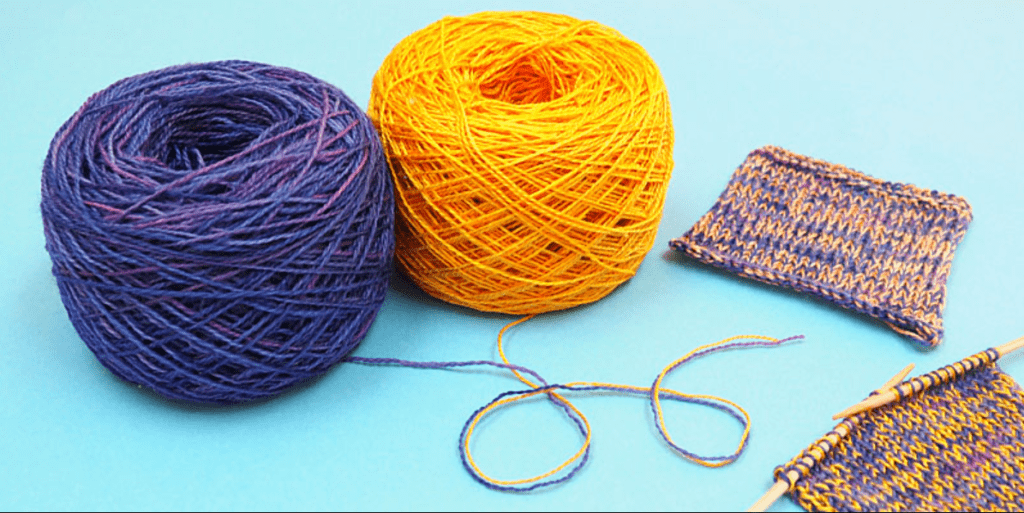
1. Fiber content
Yarns specifically labeled as “sock” yarn are not always a good choice because sometimes the word sock on the label refers to the thickness of the yarn. So, it is always a good idea to check the fiber content of the yarn.
A good example of this type of yarn is Calabrio Sock. It is 100% merino wool yarn and is so soft that your socks will have holes in them very quickly. So, it is more suitable for shawls for example.
1.1 Wool with reinforcement is the best material for socks.
I prefer to make my socks with a blend of wool and nylon because wool wicks moisture away from the skin and insulates but also breathes, which is great for keeping your feet warm in the winter and dry in the summer. Creates content. Wool is also elastic so your socks will mold well to the shape of your feet and always return to their original shape after stretching.
However, wool alone wears out very quickly so it needs some reinforcement if you are going to wear your socks in shoes for example. Most commonly the reinforcement is nylon (also known as polyamide), but if you prefer non-plastic socks, there are those reinforced with Tencel, mohair, or silk.
If you have sensitive skin you can use a ball of softer wool like merino but I recommend something more rustic as merino is pilled and not as durable as “woolly” wool. In the end, it’s a matter of taste: if you prefer softness over durability, by all means, use merino wool.
I also use thin wool socks in summer but if you find pure wool socks too hot for summer, I suggest you try toeing a weighty wool and bamboo blend yarn. Read more about good yarn options for summer socks here.
1.2 Good plant-based alternatives to wool
If you can’t or don’t want to use wool for some reason, there are also many good plant-based options such as cotton and bamboo blend yarns. The only thing you need to remember with plant-based fibers is that they are not as flexible as wool and you may need to buy a flexible thread.
At the end of this post, I’ve listed plant-based socks that don’t require elastic yarn.
1.3 Avoid acrylics.
My personal opinion is that acrylic yarn is not a good choice for knitted socks because it holds moisture against your skin and does not breathe. What happens is that your feet get sweaty easily and your socks get uncomfortably wet as the moisture sticks to your skin.
2. Yarn thickness and construction
- If you want to wear your socks inside your shoes, choose finger weight yarn (also known as sock weight yarn or 4ply yarn).
- If your shoes are loose fitting, you can choose a slightly thicker game or lighter DK weight yarn.
- Choose DK or worsted weight yarn for boot socks.
- For house or sleep socks, you can also use a chunky yarn like Noveta Aswelli. They become super-fast.
A sock yarn is usually made up of multiple plies twisted around each other. The tighter the twist and the more plies, the stronger the yarn. There are even some sock yarns that have no reinforcement because they are spun so tightly. A good rule of thumb here is that single ply yarn will not be the best yarn for knitting socks.
3. Aftercare
The last thing to consider before buying sock yarn is aftercare. Check the label to see if you need to hand wash your socks or if you can machine wash them. If the wool yarn is machine washable, it is often treated with a superwash process that prevents felting.
Non-superwash wool needs to be hand washed but the good news is that wool is naturally soil resistant so it doesn’t need to be washed as often as other fibers.
What to consider in the best
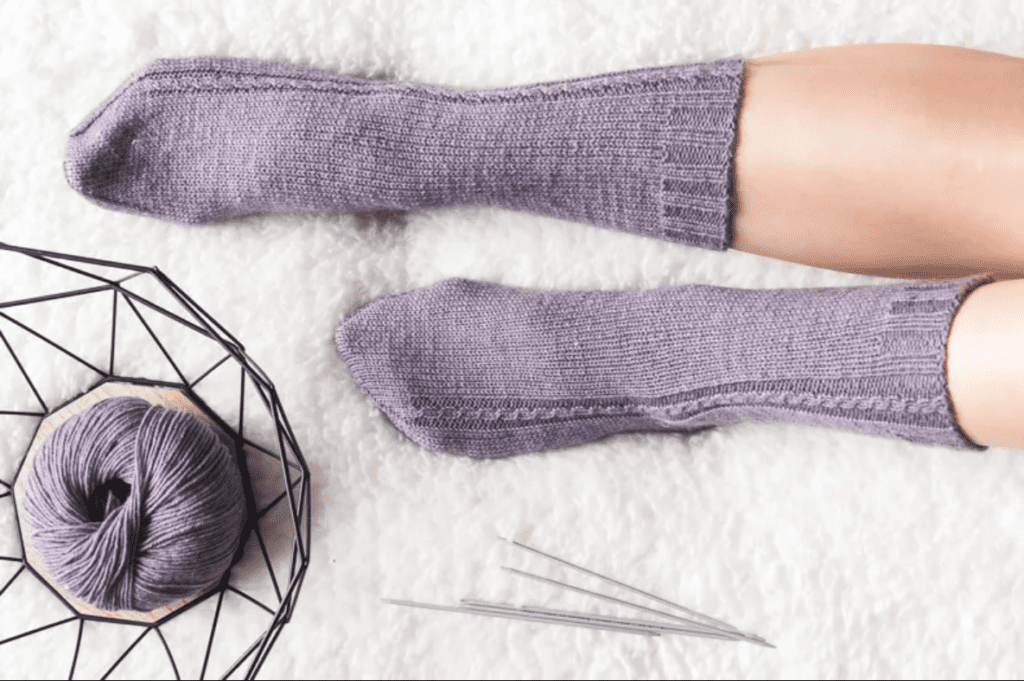
Socks should hug the leg.
Most people prefer a tight, non-floppy sock. They should hug the leg. No joy picking up your socks!
You need ply and low-yield yarn.
A blend of wool and nylon provides flexibility. Try KnitPicks Stroll Yarn. It is beautiful and soft and affordable.
It’s amazing how flexible wool is, but reinforcing it with nylon adds strength.
Exercise is given to wearing socks in shoes. The friction created means that the fabric of the sock needs to be stronger.
Socks need to be washed.
Socks are worn every day in cold weather.
They stand for clothing and washing. Avoid threads that are visibly discolored by regular washing.
Machine washable yarn saves time. If you don’t mind hand washing, choose from several other types of yarn.
Thin or fat?
If you like thin socks, choose toe weight sock yarn (400m/100g). (396 yds/3.5oz)
The first step is to think about what kind of socks you want to make or like to make.
thick
Thin?
For the office?
Wild and fun?
Thicker wools such as DK Weight or Sport Weight yarn make better socks.
Mind the amount of space in your shoes!
Who is your target audience?
It’s easy to start with one in mind.
- Favorite color?
- A color or self-stripping yarn?
- Simple or fancy sewing patterns?
- What thickness?
- Long or short?
Think about it to make sure your handmade socks are worn. They will love the gift you made!
What knitting materials do you have?
use
- DPN (double point needles)
- Circular knitting needles
Knitters recommend these needle options:
- 6″ double pointed needles
- Two circular needles (a Chiaogoo interchangeable needle set is great)
- Magic loop using a long circular knitting needle to make two socks at a time
- 9″ circular knitting needles
Weaving tension
Consider what kind of tension you have, tight or loose.
It is very important when working with any sock pattern to check your gauge.
How does the yarn feel?
How the yarn feels on your hands often feels different against the calf and foot.
Some people are sensitive to abrasive wool.
Others have a higher tolerance for coarse yarn in socks that they would never pick up as a scarf or sweater.
Softness is a consideration for some people. Remember, soft threads don’t stand up to rubbing very well.
They are more likely to be shot and punctured sooner.
Socks on knitting needles in scallop pattern in blue thread.
Follow Lois Crothers on Instagram @boo_biloo. Visit her store for great sock knitting patterns.
Do you want your sewing to shine?
Are you a fan of intricate sewing patterns? If so, think about your yarn color.
Plain or ‘kettle dyed’ yarn, the best solid colored sock yarn, allows intricate stitch patterns to shine through in socks.
Dark colors mask textures and cables. If you want to highlight the pattern, choose lighter colors.
Self-stripping yarn for color
My bed socks made with self-stripping yarn – Felicity by Knit picks – Orange, Blue and Purple Stripes
Self-stripping yarn is wonderful for colorful, wild sock patterns.
Remember, the heel you choose in your sock affects the stripes.
If you find it, use the leftovers for great yarn for a scarf that’s super colorful!
Socks made using regia yarn that appear to use the colorwork technique. It’s just how the yarn is dyed to look like the pattern. Colors are turquoise, yellow, pink, white, green, orange and grey.
In a clever way the yarn is machine dyed to look like stranded dyes
Think about your budget.
If you can afford expensive yarn, you want something that will last. Only you can determine the best affordable yarn.
Yarn Blends
Avid sock knitters do not recommend yarns containing silk, bamboo, angora, cashmere or alpaca, even in blends.
On my feet are the Fairy Maiden socks I made in lilac – a merino/silk yarn blend.
My first fairy socks are made from a leftover merino wool/silk blend. They are super soft but I know they won’t resist scratching for long.
The best silk sock yarn is great for shawls or delicate knits.
Cotton blended yarns are also more delicate than pure wool. These fibers do not withstand abrasion well.
If you live in a warm climate, you may want to stick with cotton or cotton blend yarns. These are the perfect summer socks.
Pure synthesis will not provide long-lasting warmth.
This type of yarn holds moisture against your feet, making them cool and sticky with wear.
Acrylic is not the best sock yarn because it makes your feet sweat.
If you’re new to knitting socks, start with yarn labeled socks.
They are more durable and easier to wash than similar weight yarns not made for socks. They are more likely to have nylon to strengthen the yarn.
For the best non-wool sock yarn, consider cotton/nylon and bamboo/cotton/nylon blends.
This is a great value yarn if you are allergic to wool.
Want a neat sock yarn cake? A ball winder yarn tool is essential.
Yarn for socks needs to handle friction.
The yarn used for socks should be abrasion resistant.
Knitted socks put a lot of stress on the fibers as they rub against your feet, shoes or the ground.
If you’re making socks to wear while sleeping, expect to get shot. The movement of your feet over time will cause the bullet to rub against the sheets.
Choosing a super soft yarn is not a good idea.
Socks need to absorb or wick away moisture.
Feet sweat, socks need to absorb or wick away moisture to feel good (and smell). Nothing beats wool.
It absorbs about one-third of its weight in moisture before it senses moisture.
Some knitters prefer cotton socks, but they don’t absorb moisture.
Socks need to be washed.
Consider super wash yarns, (like super wash merino wool.) Throw them in cold water in the washing machine.
The best washable wool socks are labeled ‘Super wash’.
However, for non-super wash wool, hand washing is not difficult.
Wool blend yarns may require hand washing.
I always hand wash socks that are not super wash wool. It doesn’t take much time and it makes the socks look great.
Sock yarn weight
Finger-weight yarn, play, and D-weight 6 to 8 stitches per inch.
The finer the gauge, the better the shape of the sock.
Make socks in worsted weight yarn on gauges up to 4 stitches per inch.
What is Sock Yarn?
It’s a super fine yarn. The American Craft Yarn Council places it in the Super Fine category with the symbol number 1.
It’s knitted on small needles like 2.25mm or US needle size 1-3.
In the US it’s referred to as fingering and 4 ply in the UK, Australia and New Zealand.
Tanis Fiber Arts Hand dyed yarns
Wonderful hand-dyed yarns by Tanis Fiber Arts are perfect for socks.
This type of yarn varies in thickness or yarn weight, like super bulky or worsted weight. These thicknesses are best suited to bed socks or outdoor socks to go hiking in.
It’s often a blend of fibers, making the finished fabric more durable. It is not only for socks. The fiber content varies.
Wool yarn is popular for warm and cozy socks. Use it in knitted blankets and shawls.
Arne & Carlos Use Self Striping Yarn to Knit the World’s Easiest Socks!
You’ll learn Arne’s techniques for knitting a toe-up sock.
The yarn product they use is Regia Pairfect Design Line 4-Ply by Arne & Carlos.
This self-striping yarn creates different effects.
It’s a blend of 75% superwash wool and 25% polyamide (for reinforcement). Giving it stretch and durability and its machine washable.
Question and Answer
- What are popular yarn blends for knitting socks?
When combined with merino and nylon, mohair is a wonderfully durable fiber.
Have cold feet? Nothing beats the heating power of angora.
Even a small amount of angora in a wool sock increases its warmth.
- What is the best self-stripping sock yarn?
Self-striping yarn makes wonderful wild stripes when knitting socks.
Sock knitting experts advise that the best self-stripping has a long color change. Felici yarn is a great option, and the price is affordable.
Pair of socks I made with Nit Picks Felici Yarn in purple, orange, and blue stripes and Knit Picks Interchangeable Rainbow Options
- What is the worst weight sock yarn?
Worsted weight refers to the thickness of the yarn.
Worsted weight sock yarn is thicker than regular yarn. Just the thing to make thicker, bulkier socks.
Knit picks Chroma Co A wonderful weight yarn – 70% wool / 30% nylon.
- What is the best sock yarn for knitting socks?
Yarn experts like author Clara Parks say the best yarns for socks are stretchy.
Socks need to stretch around a foot, cling to the foot during wear, and hug the calf.
Wool and nylon blend yarns are great.
Read her best book: The Knitter’s Book of Socks: The Yarn Lover’s Ultimate Guide to Making Socks That Fit Well, Feel Great, and Last a Lifetime
The Knitter’s Book of Socks
Check the price on Amazon.
- Why wool and nylon?
Wool has excellent bounce and fiber memory. Cotton, angora and alpaca have less elasticity.
Interested in less flexible fibers? Your best bet is a wool and nylon blend. The best stretch in it is still hot.
Wool is the best fiber for spinning sock yarn.
The best, longest-lasting yarns are wool and contain at least 20% nylon.
This is the best sock ever and the most popular.
An essential component for durability is nylon, acrylic or some type of synthetic material.
Excellent for stretch and longevity.
This is the perfect sock yarn for making socks. I know you will find a beautiful, quality yarn to suit your needs.
I would love to hear about your preference. Please leave a note in the comments section below.
Enjoy your knitting 🙂
Excellent fingering weight sock yarn
In my opinion, for a basic pair of knitted socks, the best yarn is a superwash wool and nylon blend yarn with a tight twist. Below I have listed a few threads that meet the criteria.
Knit Picks Stroll
The most gentle, affordable, washable treatment for your feet. The rich solid colors of this high-grade merino wool and nylon blend reveal the texture, laces, and cables without distraction.
Weight: Fingertip
Fiber Content: 75% Fine Superwash Merino Wool, 25% Nylon
Care: Machine wash
Yarn thickness and construction
If you want to wear your socks inside shoes, choose toe weight yarn (also known as sock weight yarn or 4ply yarn).
If your shoes are loose fitting, you can choose a slightly thicker game or lighter DK weight yarn.
Choose DK or worsted weight yarn for boot socks.
For house or sleep socks, you can also use a chunky yarn like Novetta Aswelli. They become extremely fast.
Sock yarn is usually made of multiple plies twisted around each other. The tighter the twist and the more pleats, the stronger the yarn. There are even some sock yarns that have no reinforcement because they are spun so tightly. A good rule of thumb here is that single ply yarn will not be the best yarn for knitting socks.
Aftercare
The last thing to consider before buying sock yarn is aftercare. Check the label to see if you need to hand wash your socks or if you can machine wash them. If the wool yarn is machine washable, it is often treated with a superwash process that prevents felting.
Non-superwash wool needs to be hand washed but the good news is that wool is naturally soil resistant so it doesn’t need to be washed as frequently as other fibers.
The best finger weight sock yarn
In my opinion, for a basic pair of knitted socks, the best yarn is a superwash wool and nylon blend yarn with a tight twist. Below I have listed a few threads that meet the criteria.
Knit Picks Stroll
The most gentle, affordable, washable treatment for your feet. The rich solid colors of this high-grade merino wool and nylon blend reveal the texture, laces and cables without distraction.
Weight: Fingertip
Fiber Content: 75% Fine Superwash Merino Wool, 25% Nylon
Care: Machine wash

